GastroGard for Horses
-
- Oral paste 2.28gm tube
- Oral Paste for Equine Ulcers (omeprazole)
- FDA Approved prescription medication for ulcer treatment
- Prevents Gastric Ulcer Recurrence
- Once-a-Day Dosing
- Oral paste 2.28gm tube
Why GastroGard Paste?
-
- Because of Omeprazole — it shuts down acid production in the stomach effectively, giving the ulcer time to heal.
- The cells of the stomach mucosa contain several acid-stimulating receptors, and when these receptors are activated they switch on the H+,K+ ATPase acid pump (an enzyme system) to secrete acid into the stomach.
- Omeprazole inhibits the acid pump, so when receptors are activated the acid pump does not initiate acid secretion.
- Omeprazole is the only medication approved for use in horses that acts directly on the acid pump, preventing acid secretion no matter what receptor is activated.
- Omeprazole was the first acid pump inhibitor to be approved for use in humans, and is now the first and only acid pump inhibitor approved for the treatment of stomach ulcers in horses.
Active Ingredient
Omeprazole
Dosage
-
- The minimum recommended dosage is 1.8 mg/lb per day (4.0 mg/kg).
- Use the weight markings on the syringe plunger for dosing.
- The contents of one syringe will dose a 1,250 lb horse.
- Should be administered orally once-a-day for 4 weeks (28 days).
Qualitative and quantitative composition
Each gram contains:
Active substance: Omeprazole 370 mg
Excipient: Yellow iron oxide (E172) 2 mg
For the full list of excipients, see below.
Pharmaceutical form
Oral paste. Smooth homogeneous yellow to yellow-tan paste.
Clinical particulars
Target species
Horses.
Indications for use
For treatment and prevention of gastric ulcers.
Contra-indications
Do not use in mares producing milk for human consumption.
Special warnings for each target species
None.
Special precautions for use in animals
Not recommended for animals under 4 weeks of age or weighing less than 70 kg bodyweight. Stress (including high performance training and competition), feeding, management and husbandry practices may be associated with the development of gastric ulceration in horses. Individuals responsible for the well-being of horses should consider reducing the ulcerogenic challenge by modifying husbandry practices to achieve one or more of the following: reduced stress, reduced fasting, increased intake of roughage and access to grazing.
Special precautions to be taken by the person administering the product to animals
As this product may cause hypersensitivity, avoid direct contact with skin and eyes. Use impervious gloves and do not eat or drink when handling and administering the product. Wash hands or any exposed skin after use. In case of contact with eyes, wash immediately with clean running water and seek medical advice. Persons developing a reaction after contact with the product should avoid handling the product in future.
Adverse reactions
None known
Use during pregnancy, lactation or lay
Laboratory studies in rats and rabbits have not produced any evidence of a teratogenic effect.
In the absence of data during pregnancy and lactation, the use of GastroGard in pregnant and lactating mares is not recommended.
Interactions
Omeprazole may delay the elimination of warfarin. No other interaction with medicines routinely used in the treatment of horses is expected, although interaction with drugs metabolised by liver enzymes cannot be excluded.
Amounts to be administered and administration route
GastroGard is effective in horses of various breeds and under different management conditions; foals as young as four weeks and weighing over 70 kg; and breeding stallions.
For oral administration.
Treatment of gastric ulcers: One administration per day during 28 consecutive days at the dose rate of 4 mg omeprazole per kg bodyweight followed immediately by a dosage regimen of one administration per day during 28 consecutive days at the dose rate of 1 mg omeprazole per kg bodyweight, to reduce the recurrence of gastric ulcers during treatment. Should recurrence occur, re-treatment at a dose rate of 4 mg omeprazole per kg body weight is recommended.
It is recommended that treatment is combined with changes of husbandry and training practices (please see Special precautions for use in animals).
Prevention of gastric ulcers: One administration per day at the dose rate of 1 mg omeprazole per kg bodyweight.
To deliver GastroGard at the dose of 4 mg omeprazole/kg, set the syringe plunger to the appropriate dose division for the horse’s weight. Each full dose division on the syringe plunger delivers sufficient omeprazole to treat 100 kg bodyweight. The contents of one syringe will treat a 575 kg horse at the rate of 4 mg omeprazole per kg bodyweight.
To deliver GastroGard at the dose of 1 mg omeprazole/kg, set the syringe plunger to the dose division equivalent to one quarter of the horse’s bodyweight. At this dose, each full dose division on the syringe plunger will deliver sufficient omeprazole to treat 400 kg body weight. For example, to treat a horse weighing 400 kg, set the plunger to 100 kg.
Replace cap after use.
Overdose
No undesirable effects related to treatment were observed following daily use for 91 days at omeprazole dosages up to 20 mg/kg in adult horses and in foals older than 2 months.
No undesirable effects related to treatment (in particular no adverse effect on the semen quality or reproductive behaviour) were observed following daily use for 71 days at an omeprazole dosage of 12 mg/kg in breeding stallions.
No undesirable effects related to treatment were observed following daily use for 21 days at an omeprazole dosage of 40 mg/kg in adult horses.
Withdrawal periods
Meat and offal: 1 day. Not permitted for use in mares producing milk for human consumption.
Pharmacological particulars
Pharmacotherapeutic group
Drugs for peptic ulcer, Proton pump inhibitors.
ATCvet code: QA02BC01
In studies lasting up to 28 days, treatment with GastroGard at the dose rate of 1 mg omeprazole per kg body weight per day has been shown to help prevent the occurrence of gastric ulcers in horses exposed to ulcerogenic conditions.
Omeprazole is a proton pump inhibitor belonging to the substituted benzimidazole class of compounds. It is an antacid, for treatment of peptic ulcers.
Omeprazole suppresses gastric acid secretion by specific inhibition of the H+/K+-ATPase enzyme system at the secretory surface of the parietal cell. The H+/K+- ATPase enzyme system is the acid (proton) pump within the gastric mucosa. Because H+/K+- ATPase is the final step involved in control of acid secretion, omeprazole blocks secretion irrespective of the stimulus. Omeprazole irreversibly binds to the gastric parietal cell H+/K+-ATPase enzyme that pumps hydrogen ions into the lumen of the stomach in exchange for potassium ions.
At 8, 16 and 24 hours after dosing horses with omeprazole at 4 mg/kg/day orally, pentagastrin-stimulated gastric acid secretion was inhibited by 99%, 95% and 90% and basal secretion was inhibited by 99%, 90% and 83%.The full effect on the inhibition of acid secretion is reached by five days after the first administration.
The median bioavailability of omeprazole after oral administration as a paste is 10.5% (range 4.1 to 12.7%). The absorption is rapid with time to maximum plasma concentrations (Tmax) of approximately one hour after dosing. Mean peak concentration (Cmax) ranges from 385 ng/ml to 693 ng/ml after dosing with 4 mg/kg. There is a significant first-pass effect following oral administration. Omeprazole is rapidly metabolised principally into glucuronides of demethylated and hydroxylated omeprazole sulphide (urinary metabolites) and methyl sulphide omeprazole (biliary metabolite) as well as into reduced omeprazole (both). After oral administration at 4 mg/kg, omeprazole is detectable in plasma for 9 hours after treatment, and in urine as hydroxyomeprazole and O-desmethylomeprazole at 24 hours but not at 48 hours. Omeprazole is eliminated quickly, mainly by urinary route (43 to 61% of the dose), and to a smaller extent by faecal route, with a terminal half-life ranging from approximately 0.5 to 8 hours.
After repeated oral administration, there is no evidence of accumulation.
Pharmaceutical particulars
Excipients
Yellow iron oxide (E172), Monoethanolamine, Potassium sorbate, Cassia oil, Sodium stearate, Calcium stearate, Hydrogenated castor oil, Propylene glycol octanoate decanoate, Sesame oil.
Major incompatibilities
Not applicable.
Shelf life
Shelf life of the product as packaged for sale: 18 months.
Shelf life after first opening the immediate packaging: 28 days.
Special precautions for storage
Do not store above 30 °C. Replace cap after use.
Immediate packaging
Carton box of 1, 7 or 14 syringes.
Disposal
Any unused product or waste materials derived from such products should be disposed of in accordance with local requirements.
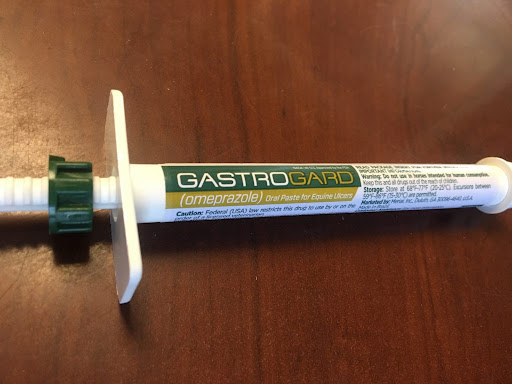
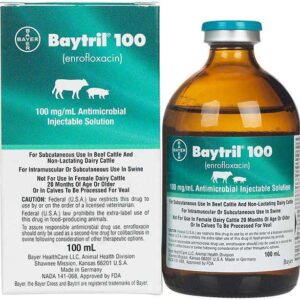
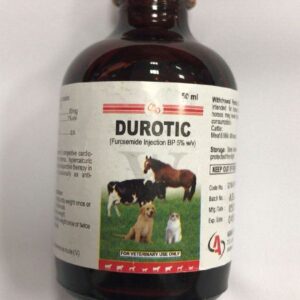
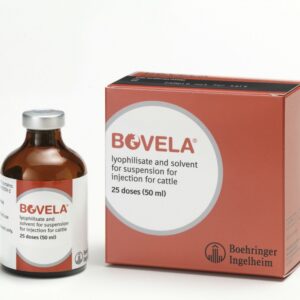
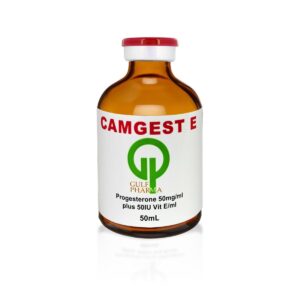
Reviews
There are no reviews yet.